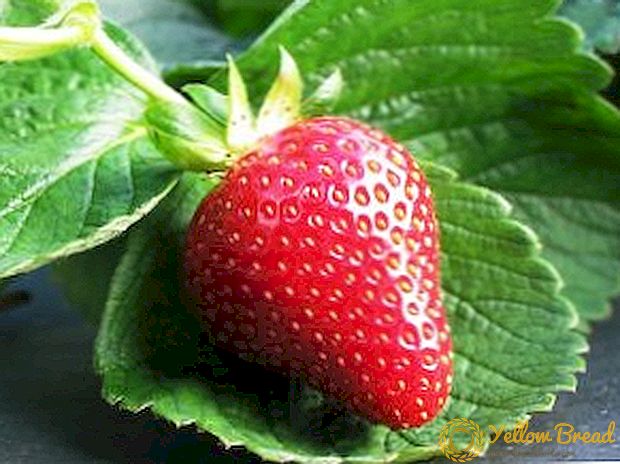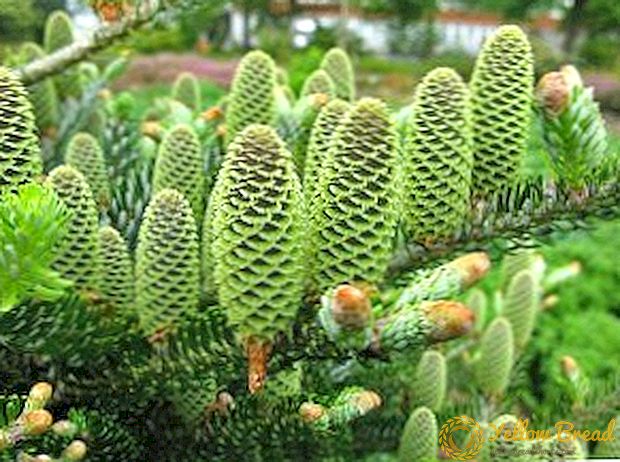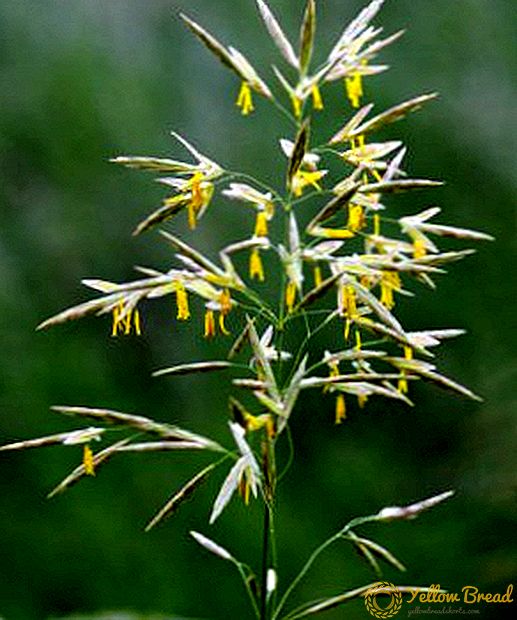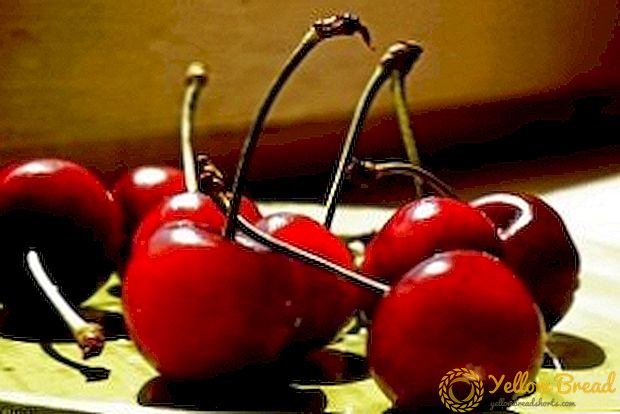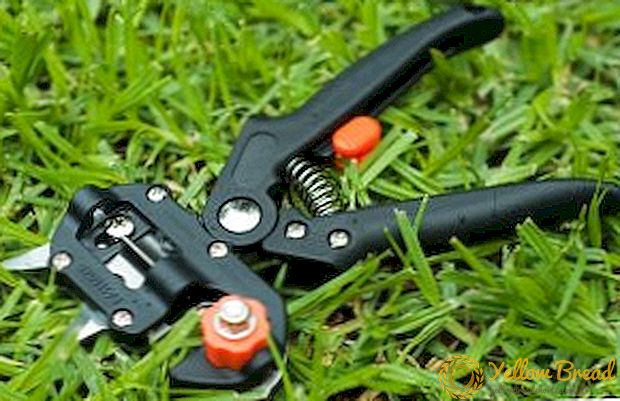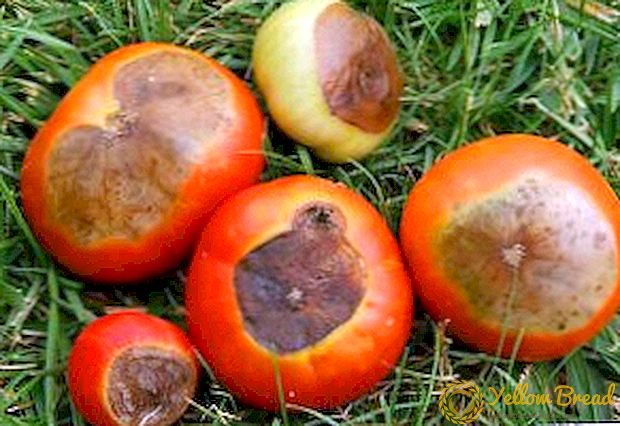 Gardeners annually face all kinds of deciduous diseases. One of them is top rot. Perhaps this is one of the most common problems associated with growing and obtaining crops from tomatoes.
Gardeners annually face all kinds of deciduous diseases. One of them is top rot. Perhaps this is one of the most common problems associated with growing and obtaining crops from tomatoes.
Let's see if this disease is so scary and what methods of struggle are offered by science and popular wisdom.
- What is dangerous and where does it come from
- Signs of tomato damage
- How to deal with top rot on tomatoes
- Prevention and agrotechnology
- Preparations for protection
- Folk remedies
- Resistant varieties
What is dangerous and where does it come from
The disease is prone to young bushes, which are just beginning to bear fruit. The problem is more of a physiological nature and is often not associated with pests or infections. Sometimes apical rot is also caused by bacteria. The disease does not kill the whole plant. The affected tomato fruits cannot be eaten.
The disease affects both tomatoes growing in the open field and greenhouses.
The cause of the disease is often the wrong watering. The fact is that when the fruit is ripening, it is necessary to water the tomatoes regularly.With a lack of moisture in the period of active development and the beginning of fruiting, the plant experiences water stress.
As a result, the leaves begin to draw off moisture to themselves, including taking moisture from the fruit. This causes the appearance of rot. Despite the fact that the tomato - the culture is quite undemanding to moisture, abundant watering during fruit ripening is still needed. The cause of the problem may also be the formation of a crust in the upper layers of the earth.
In this case, the moisture simply does not reach the roots. Frequent watering, but in small portions, too, leads to the appearance of top rot.
Excess nitrogen in the soil and a lack of calcium also causes the disease. An excess of nitrogen may occur when over-feeding tomatoes, for example, liquid manure. Calcium can no longer be absorbed by the root system of plants at very high temperatures.
Salty or acidic soil also provoke a disease. In such a land, calcium becomes poorly inaccessible to the plant.
Bacterial infection of vertex rot most often occurs due to an oversight of the owners.Called by the bacteria Bacillus mesentericus, Bacterium licopersici, etc., in the case of ripening fruits lying on the ground. Insects can become carriers of the bacterial type of the disease.
Signs of tomato damage
If dark gray or brownish spots appear on the top of the fruit, if they are flattened, it means that the bush is affected by vertex rot.
A dark putrid spot appears on the fruit at the point where the flower was. Over time, increases in size and dries. Symptoms often appear on the fruit at the beginning of ripening.
How to deal with top rot on tomatoes
The best option to combat any disease is its prevention. But if it was not possible to prevent the occurrence, then it is necessary to engage in treatment.
The causes of vertex rot in tomatoes have already been examined, and we will analyze the disease control measures.
Prevention and agrotechnology
The top rot of tomatoes can be affected and the seeds used in planting, and such a measure as prevention, will help to combat negative manifestations in the process of ripening the crop.
The primary method of prevention is timely uniform watering of plants.. Try to avoid sudden fluctuations in humidity. The next day after watering, loosen the soil with a flat cutter. Topsoil should remain loose. Try not to damage the roots of the tomatoes when loosening. Coating the soil with a layer of mulch can also be very useful.
Rows with tomatoes should be cleared from weeds.
If tomatoes grow in a greenhouse or greenhouse, watch the temperature. In case of overheating, increase the flow of fresh air. Watch the microclimate. Sharp fluctuations in temperature and humidity are undesirable.

Also, do not get involved in overfeeding plants with fertilizers. Observe the dosage indicated on the label and the frequency of application to the soil. If feeding with liquid manure or smoked, watch for the solution. He must be weak. For the season enough to feed two or three times.
Another method of protection is the procedure "bubbling". 
To do this, the seeds are immersed in water and oxygen is passed through it.To do this, you can use a small aquarium compressor. Oxygen bubbles should be small. To achieve this, use a spray or pass gas through gauze. "Bubbling" lasts eighteen hours, after which the seeds are thoroughly dried.
Preparations for protection
- To increase the overall disease resistance, seeds are recommended to be treated with any growth promoter before planting.
- You can process the seeds of a semi-per cent solution of manganese.
- Also for seed treatment, you can use a solution of succinic acid or a one percent solution of zinc sulfate. The solution of succinic acid is prepared at the rate of 17 ml of substance per liter of water. In both cases, the seeds are kept in solution for at least a day.
- For foliar top dressing of tomatoes it is good to use limestone nitrate Ca (NO3) 2. The solution is prepared at the rate of 5-10 g of substance per 10 l of water. Fertilizing the plant leaves watered no more than two times a week.
- During the period of active growth of fruits, spraying the leaves with a solution of calcium chloride CaCl2 will be useful. The solution is prepared at the rate of 3-4 g of substance per 10 liters of water. Feeding is carried out no more than two times a week.
- It is possible to feed with Ca (OH) 2 lime milk. The solution is prepared at the rate of 1 g of substance per 10 liters of water. Top dressing is done by spraying the leaves once or twice a week.
- A good tool is the introduction of universal dressings for nightshade, while respecting the dosages. You can select the drug "Nutrivant PLUS". Its combination with the additive "Fertivant" gives very good results. The solution is prepared at the rate of 25-30 g per 10 l of water.
If vertex rot has already appeared on the tomatoes, let us analyze in order what to do. First of all, you should get rid of the affected fruit. It is recommended to pick them from the bush and destroy them away from the beds with plants.
Tomato Rot Top Rot - the disease is quite complicated, and the process of its treatment will give positive results only when using special preparations.
- Feed plants with a solution of calcium chloride at the rate of 1 g of substance per 10 liters of water.
- Use special microbiological preparations, for example, "Fitosporin".
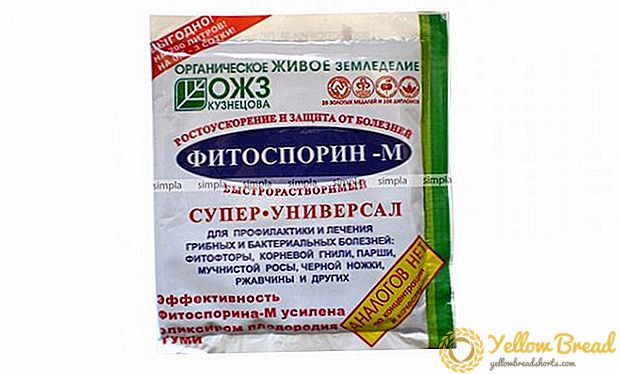 The dosage and frequency of spraying with drugs please check with the sales assistants.
The dosage and frequency of spraying with drugs please check with the sales assistants.
- In the case of the bacterial form of apical rot, substances containing copper can be used, for example, Bordeaux liquid. The solution is prepared as follows: 100 g of quicklime is dissolved in 1 liter of water, and 100 g of copper sulphate is diluted in 9 l of water. The solution with lime is added to the solution of vitriol and mix thoroughly.
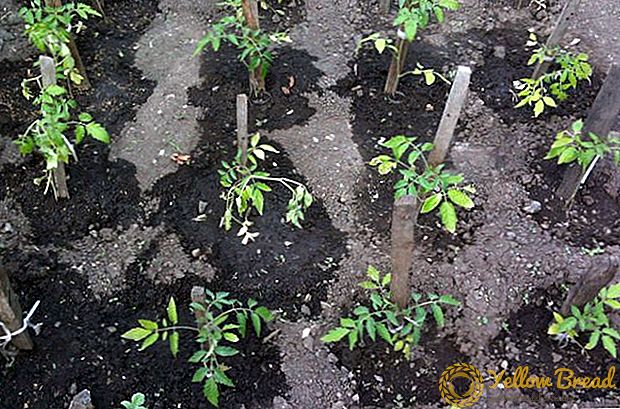
Do not expect quick results. It is better not to bring the plant to the appearance of signs of the disease.
Folk remedies
Vertex rot of tomatoes in the greenhouse - the phenomenon is quite frequent, but many methods of their treatment, including the prevention of the disease by folk remedies, are successfully applied.
- First of all, planting tomatoes should be carried out at a sufficient distance (depending on the variety). Branches and leaves should not be intertwined. To each bush, provide sufficient access.
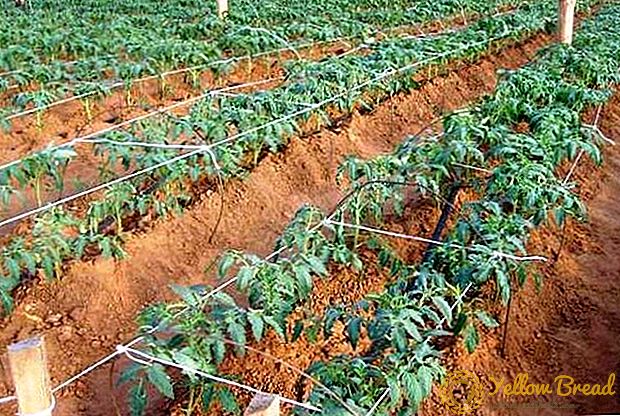
- The most commonly used method, used not only in greenhouses, but also on open ground, is staving.
- Watering tomatoes in the greenhouse is recommended every other day, and at high temperatures it is better to switch to abundant daily watering.
- The plant loves to "breathe" fresh air. Air often in a greenhouse or greenhouse.
- In the wells under the seedlings add eggshells and ashes.
Resistant varieties
During the years of breeding, the solanaceous tomatoes were obtained rather resistant to vertex rot. It should be noted that the 100% effect of tomato immunity to the disease has not been achieved today. Nevertheless, such varieties as "Alpatieva 905a", "Astrakhansky", "Moryana", "Volgograd 5/95", "Soil Gribovsky 1180", "Lia", "Lunny", "Rychansky", "Akhtanak" are distinguished by good resistance to tip rot. You can also mention such hybrids as "Benito F1", "Bolshevik F1", "Grand Canyon", "Glombbemaster F1", "Marfa F1", "Prikrasa F1", "Rotor F1", "Toch F1", "Pharaoh F1 ".
Despite the fact that the disease is quite often found on the representatives of the nightshade, methods of dealing with it are quite simple. Often, preventive measures and proper care of the plant help avoid crop loss and prevent the occurrence of not only top rot, but also many other problems.

 The dosage and frequency of spraying with drugs please check with the sales assistants.
The dosage and frequency of spraying with drugs please check with the sales assistants.

